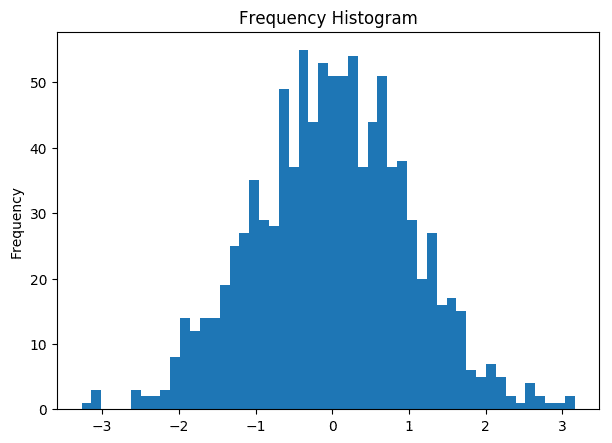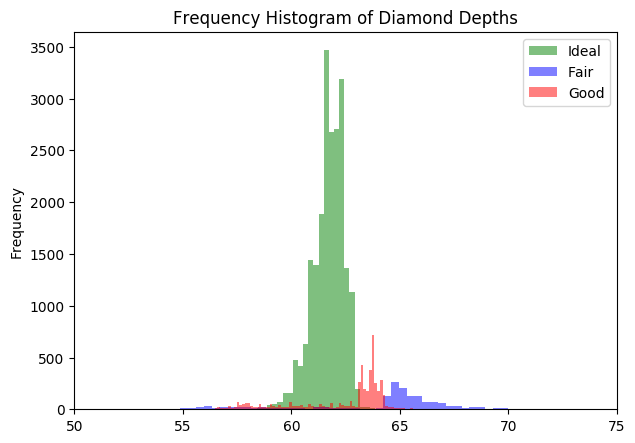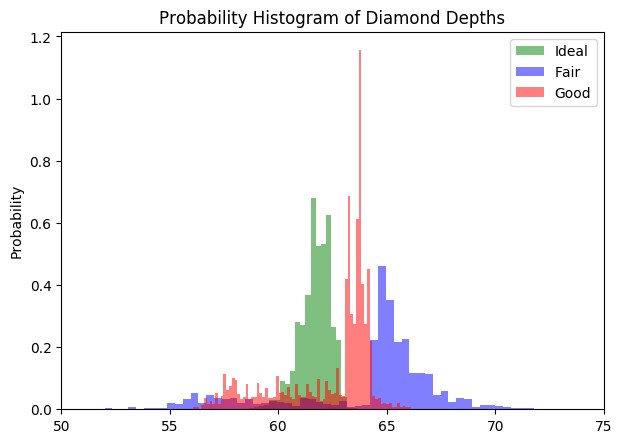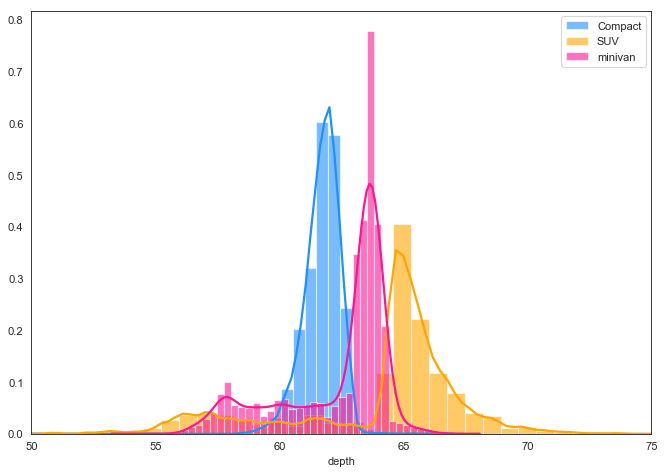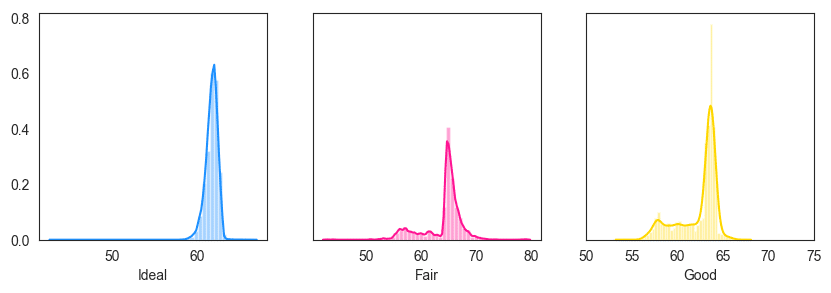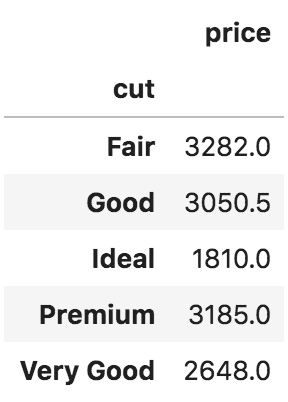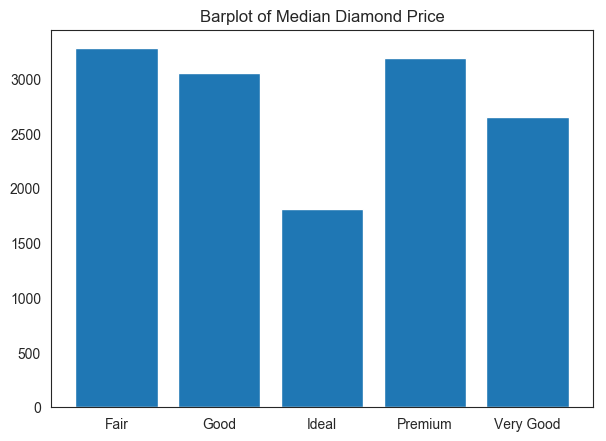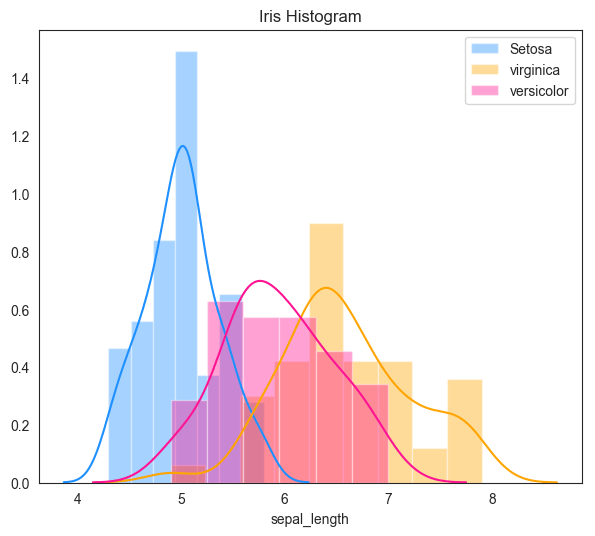- Matplotlib Histogram – How to Visualize Distributions in Python
- Content
- 1. What is a Histogram?
- 2. How to plot a basic histogram in python?
- 3. Histogram grouped by categories in same plot
- 4. Histogram grouped by categories in separate subplots
- 5. Seaborn Histogram and Density Curve on the same plot
- 6. Histogram and Density Curve in Facets
- 7. Difference between a Histogram and a Bar Chart
- 8. Practice Exercise
- 9. What next
- Related Posts
- Plotting Histogram in Python using Matplotlib
- Creating a Histogram
Matplotlib Histogram – How to Visualize Distributions in Python
Matplotlib histogram is used to visualize the frequency distribution of numeric array by splitting it to small equal-sized bins. In this article, we explore practical techniques that are extremely useful in your initial data analysis and plotting.
Content
- What is a histogram?
- How to plot a basic histogram in python?
- Histogram grouped by categories in same plot
- Histogram grouped by categories in separate subplots
- Seaborn Histogram and Density Curve on the same plot
- Histogram and Density Curve in Facets
- Difference between a Histogram and a Bar Chart
- Practice Exercise
- Conclusion
1. What is a Histogram?
A histogram is a plot of the frequency distribution of numeric array by splitting it to small equal-sized bins.
If you want to mathemetically split a given array to bins and frequencies, use the numpy histogram() method and pretty print it like below.
import numpy as np x = np.random.randint(low=0, high=100, size=100) # Compute frequency and bins frequency, bins = np.histogram(x, bins=10, range=[0, 100]) # Pretty Print for b, f in zip(bins[1:], frequency): print(round(b, 1), ' '.join(np.repeat('*', f))) The output of above code looks like this:
10.0 * * * * * * * * * 20.0 * * * * * * * * * * * * * 30.0 * * * * * * * * * 40.0 * * * * * * * * * * * * * * * 50.0 * * * * * * * * * 60.0 * * * * * * * * * 70.0 * * * * * * * * * * * * * * * * 80.0 * * * * * 90.0 * * * * * * * * * 100.0 * * * * * * The above representation, however, won’t be practical on large arrays, in which case, you can use matplotlib histogram.
2. How to plot a basic histogram in python?
The pyplot.hist() in matplotlib lets you draw the histogram. It required the array as the required input and you can specify the number of bins needed.
import matplotlib.pyplot as plt %matplotlib inline plt.rcParams.update() # Plot Histogram on x x = np.random.normal(size = 1000) plt.hist(x, bins=50) plt.gca().set(title='Frequency Histogram', ylabel='Frequency'); 3. Histogram grouped by categories in same plot
You can plot multiple histograms in the same plot. This can be useful if you want to compare the distribution of a continuous variable grouped by different categories.
Let’s use the diamonds dataset from R’s ggplot2 package.
import pandas as pd df = pd.read_csv('https://raw.githubusercontent.com/selva86/datasets/master/diamonds.csv') df.head() Let’s compare the distribution of diamond depth for 3 different values of diamond cut in the same plot.
x1 = df.loc[df.cut=='Ideal', 'depth'] x2 = df.loc[df.cut=='Fair', 'depth'] x3 = df.loc[df.cut=='Good', 'depth'] kwargs = dict(alpha=0.5, bins=100) plt.hist(x1, **kwargs, color='g', label='Ideal') plt.hist(x2, **kwargs, color='b', label='Fair') plt.hist(x3, **kwargs, color='r', label='Good') plt.gca().set(title='Frequency Histogram of Diamond Depths', ylabel='Frequency') plt.xlim(50,75) plt.legend(); Well, the distributions for the 3 differenct cuts are distinctively different. But since, the number of datapoints are more for Ideal cut, the it is more dominant.
So, how to rectify the dominant class and still maintain the separateness of the distributions?
You can normalize it by setting density=True and stacked=True . By doing this the total area under each distribution becomes 1.
# Normalize kwargs = dict(alpha=0.5, bins=100, density=True, stacked=True) # Plot plt.hist(x1, **kwargs, color='g', label='Ideal') plt.hist(x2, **kwargs, color='b', label='Fair') plt.hist(x3, **kwargs, color='r', label='Good') plt.gca().set(title='Probability Histogram of Diamond Depths', ylabel='Probability') plt.xlim(50,75) plt.legend(); 4. Histogram grouped by categories in separate subplots
The histograms can be created as facets using the plt.subplots()
Below I draw one histogram of diamond depth for each category of diamond cut . It’s convenient to do it in a for-loop.
# Import Data df = pd.read_csv('https://raw.githubusercontent.com/selva86/datasets/master/diamonds.csv') # Plot fig, axes = plt.subplots(1, 5, figsize=(10,2.5), dpi=100, sharex=True, sharey=True) colors = ['tab:red', 'tab:blue', 'tab:green', 'tab:pink', 'tab:olive'] for i, (ax, cut) in enumerate(zip(axes.flatten(), df.cut.unique())): x = df.loc[df.cut==cut, 'depth'] ax.hist(x, alpha=0.5, bins=100, density=True, stacked=True, label=str(cut), color=colors[i]) ax.set_title(cut) plt.suptitle('Probability Histogram of Diamond Depths', y=1.05, size=16) ax.set_xlim(50, 70); ax.set_ylim(0, 1); plt.tight_layout(); 5. Seaborn Histogram and Density Curve on the same plot
If you wish to have both the histogram and densities in the same plot, the seaborn package (imported as sns ) allows you to do that via the distplot() . Since seaborn is built on top of matplotlib, you can use the sns and plt one after the other.
import seaborn as sns sns.set_style("white") # Import data df = pd.read_csv('https://raw.githubusercontent.com/selva86/datasets/master/diamonds.csv') x1 = df.loc[df.cut=='Ideal', 'depth'] x2 = df.loc[df.cut=='Fair', 'depth'] x3 = df.loc[df.cut=='Good', 'depth'] # Plot kwargs = dict(hist_kws=, kde_kws=) plt.figure(figsize=(10,7), dpi= 80) sns.distplot(x1, color="dodgerblue", label="Compact", **kwargs) sns.distplot(x2, color="orange", label="SUV", **kwargs) sns.distplot(x3, color="deeppink", label="minivan", **kwargs) plt.xlim(50,75) plt.legend(); 6. Histogram and Density Curve in Facets
The below example shows how to draw the histogram and densities ( distplot ) in facets.
# Import data df = pd.read_csv('https://raw.githubusercontent.com/selva86/datasets/master/diamonds.csv') x1 = df.loc[df.cut=='Ideal', ['depth']] x2 = df.loc[df.cut=='Fair', ['depth']] x3 = df.loc[df.cut=='Good', ['depth']] # plot fig, axes = plt.subplots(1, 3, figsize=(10, 3), sharey=True, dpi=100) sns.distplot(x1 , color="dodgerblue", ax=axes[0], axlabel='Ideal') sns.distplot(x2 , color="deeppink", ax=axes[1], axlabel='Fair') sns.distplot(x3 , color="gold", ax=axes[2], axlabel='Good') plt.xlim(50,75); 7. Difference between a Histogram and a Bar Chart
A histogram is drawn on large arrays. It computes the frequency distribution on an array and makes a histogram out of it.
On the other hand, a bar chart is used when you have both X and Y given and there are limited number of data points that can be shown as bars.
# Groupby: cutwise median price = df[['cut', 'price']].groupby('cut').median().round(2) price fig, axes = plt.subplots(figsize=(7,5), dpi=100) plt.bar(price.index, height=price.price) plt.title('Barplot of Median Diamond Price'); 8. Practice Exercise
Create the following density on the sepal_length of iris dataset on your Jupyter Notebook.
import seaborn as sns df = sns.load_dataset('iris') # Solution import seaborn as sns df = sns.load_dataset('iris') plt.subplots(figsize=(7,6), dpi=100) sns.distplot( df.loc[df.species=='setosa', "sepal_length"] , color="dodgerblue", label="Setosa") sns.distplot( df.loc[df.species=='virginica', "sepal_length"] , color="orange", label="virginica") sns.distplot( df.loc[df.species=='versicolor', "sepal_length"] , color="deeppink", label="versicolor") plt.title('Iris Histogram') plt.legend(); 9. What next
Congratulations if you were able to reproduce the plot.
Related Posts
Plotting Histogram in Python using Matplotlib
A histogram is basically used to represent data provided in a form of some groups.It is accurate method for the graphical representation of numerical data distribution.It is a type of bar plot where X-axis represents the bin ranges while Y-axis gives information about frequency.
Creating a Histogram
To create a histogram the first step is to create bin of the ranges, then distribute the whole range of the values into a series of intervals, and count the values which fall into each of the intervals.Bins are clearly identified as consecutive, non-overlapping intervals of variables.The matplotlib.pyplot.hist() function is used to compute and create histogram of x.
The following table shows the parameters accepted by matplotlib.pyplot.hist() function :
| Attribute | parameter |
|---|---|
| x | array or sequence of array |
| bins | optional parameter contains integer or sequence or strings |
| density | optional parameter contains boolean values |
| range | optional parameter represents upper and lower range of bins |
| histtype | optional parameter used to create type of histogram [bar, barstacked, step, stepfilled], default is “bar” |
| align | optional parameter controls the plotting of histogram [left, right, mid] |
| weights | optional parameter contains array of weights having same dimensions as x |
| bottom | location of the baseline of each bin |
| rwidth | optional parameter which is relative width of the bars with respect to bin width |
| color | optional parameter used to set color or sequence of color specs |
| label | optional parameter string or sequence of string to match with multiple datasets |
| log | optional parameter used to set histogram axis on log scale |
Let’s create a basic histogram of some random values. Below code creates a simple histogram of some random values:
